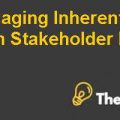Compare and Contrast the Planned and Emergent Approaches to Change Case Study Help
Planned Approach to Change
The planned approach to change represents a structured and systematic method employed by organizations to manage and implement change initiatives. This approach is rooted in the idea that change can be effectively regulated, foreseen, and overseen with a considerable level of assurance. Following this, organizations transition into the planning phase, during which they construct a thorough plan that delineates goals, tactics, and schedules.
Implementation follows, during which organizations execute the planned activities, which might encompass anything from restructuring to technology adoption. Finally, the evaluation phase assesses the results and collects feedback from employees and stakeholders to gauge success and areas for improvement. Prominent proponents of the planned approach include Kurt Lewin and John Kotter.
Emergent Approach to Change
The emergent approach to change embraces the notion that change is often unpredictable and can spontaneously emerge within an organization. It highly values flexibility, adaptability, and a process that remains open-ended. A distinguishing feature of this approach is its acknowledgment that change can emerge from various origins, encompassing employees at different tiers of the organization. Rather than adhering to a predetermined plan, the emergent approach allows change to organically surface in response to evolving circumstances.
Flexibility is a fundamental characteristic, with this approach readily accommodating adjustments or even the abandonment of initial change plans as new information becomes available or external factors evolve. Change under the emergent approach is viewed as an iterative process, with organizations continuously assessing and adapting to the evolving situation. Key thinkers associated with the emergent approach include Henry Mintzberg and Ralph Stacey.
Comparison
Nature of Change
Both the planned and emergent approaches recognize change as an inevitable and constant factor in organizational life. They understand that organizations cannot remain static and must evolve to remain relevant in changing environments. Both approaches acknowledge that change can stem from various sources, including external factors such as market dynamics, and technology advancements, and internal factors like strategic decisions or employee initiatives.
Initiation
The planned and emergent approaches to change share commonalities in their understanding of initiation. They both recognize that change can be instigated by various actors within and outside the organization, and they appreciate the potential for bottom-up change initiatives. While the specific roles and processes may differ, the acknowledgment of multiple initiation pathways highlights the flexibility and adaptability of both approaches in addressing change.
Flexibility
One key similarity is the recognition of the need for adaptation. Both the planned and emergent approaches acknowledge that organizations must be flexible and adaptable to navigate change successfully. They understand that rigid, inflexible structures can hinder effective change management.
Timing
They recognize that the timing of change initiatives can be variable, driven by external triggers and that timely responses are often essential. Additionally, both approaches acknowledge the importance of strategic timing and the need for flexibility to adapt to changing circumstances. This shared understanding of timing underscores the dynamic and context-dependent nature of change management in organizations.
Contrast
Degree of Control
In the planned approach, there is a strong emphasis on control and predictability. It operates under the assumption that change can be effectively managed and controlled through meticulous planning and precise execution. This means that organizations following this approach believe they can shape the course of change, ensuring it adheres closely to the predefined plan. The goal is to minimize uncertainty and maximize adherence to the planned path.
In contrast, the emergent approach acknowledges the inherent lack of control over change (Scoones, 2020). It recognizes that change can unfold in unforeseen and unpredictable ways. This approach embraces the idea that certain aspects of change cannot be fully controlled. Instead of trying to exert rigid control, it allows room for change to evolve organically in response to emerging circumstances. The focus is on adaptability and flexibility rather than strict control.
Employee Involvement
Employee involvement in the planned approach is typically limited to the implementation stage. Employees are expected to follow the predefined plan set by leadership or change agents. While communication and training may be part of the plan, the primary role of employees is often to execute the established procedures.
The emergent approach takes a more inclusive approach to employee involvement. It actively encourages all employees, regardless of their position within the organization, to participate in the change process. This approach values the insights, ideas, and contributions that can emerge from the workforce. It recognizes that employees can play a crucial role in shaping and driving change initiatives.........
Compare and Contrast the Planned and Emergent Approaches to Change Case Study Help
partial case solution. Please place the order on the website to order your own originally done case solution."}" data-sheets-userformat="{"2":513,"3":{"1":0},"12":0}">This is just a sample partial case solution. Please place the order on the website to order your own originally done case solution.













